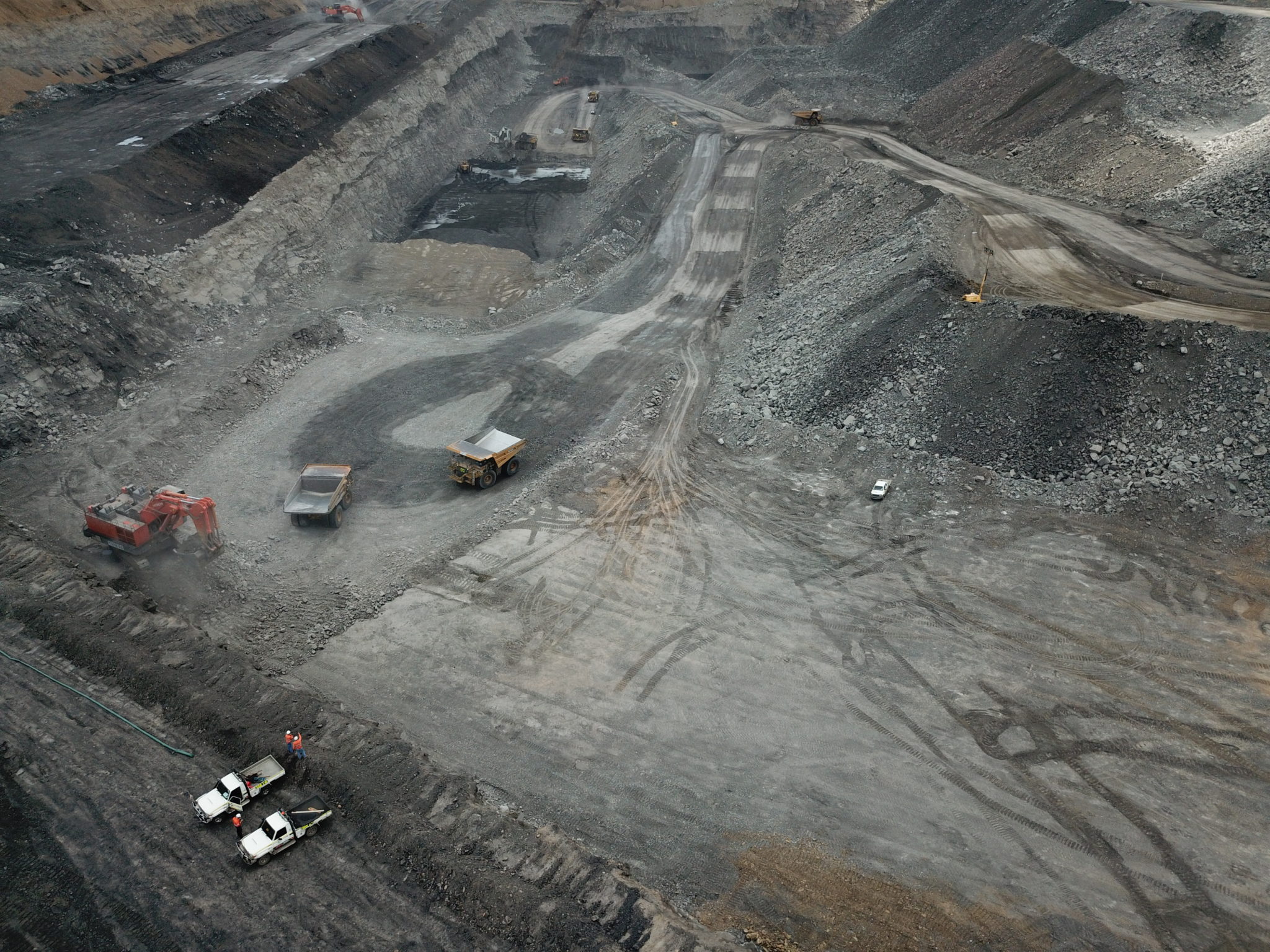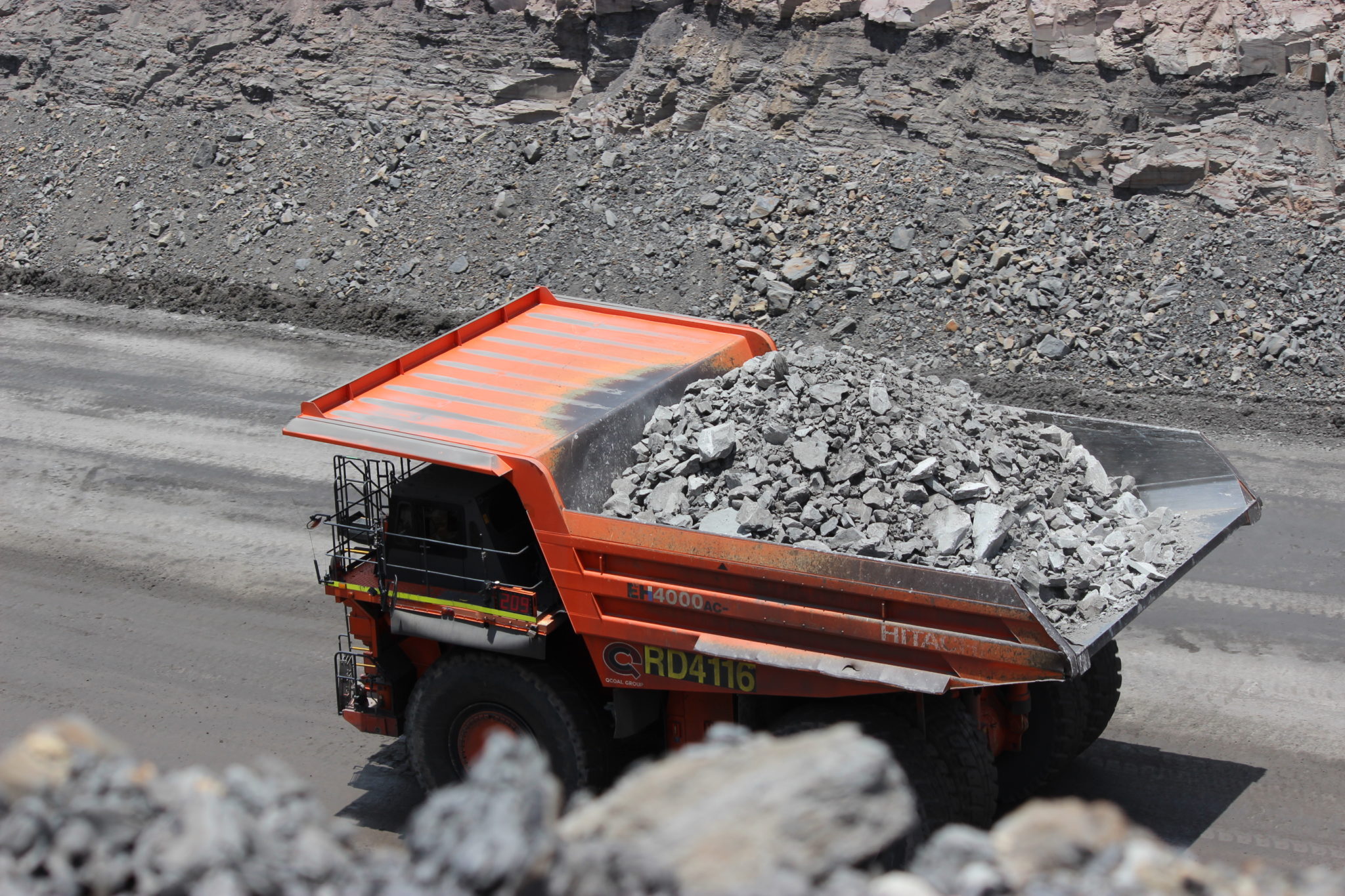There has been growing concern about air quality as result of mining and construction activities in Australia. The geography of Australia relative to mineral deposits entails transit of mined product over long distances to feed into domestic and foreign markets. Inevitably, the supply and demand of the mining industry relies on transportation via sea, road and rail but predominantly (for exports) sea. Imperative is to have effective measures for dust control at the pit, during transport and at the port during shipping without forgetting the in between pit and port. The value chain and the different activities from pit to port take place in successive stages and in some cases totally discontinuous to norm but the most worrisome common factor is dust generation. Dust can be generated from source through drilling and blasting continuing through transit of materials via road or rail over the haulage to stockpiling and loading at the port. In Australia, the WA Government utilizes the Environmental Protection Act 1986 WA (currently under amendment and review as the Environmental Protection Amendment Bill 2020 WA) to assess dust management programs initiated from pit to port with focus on Part IV which deals with environmental impact assessments. Dust from pit to port affects public health, community amenities, ecology and water quality.
The key questions the article seeks to answer are:
- How are pit to port activities associated with dust generation?
- What are the key areas that generate dust from pit to port?
- What solutions are available for dust suppression?
In answering these questions we will highlight each area from pit to port and identify problem areas requiring dust suppression as well as provide relevant solutions offered by GRT.
Local communities carrying the load
As globalization has opened up need for Australia’s resources elsewhere, the unsung heroes in this contribution to the economy become the communities that stay within the routes to port or in the vicinity of the mining areas. Their contribution often is not just as the workforce at the mine but also they bear the brunt of the dust generated from the activities. Historically, some towns in Australia were born out of the mining boom which must be considered as parity to the need to make sure that sound environmental decisions and human health considerations are taken against dust generated from pit to port. The problem areas as we move from pit to port include drilling and blasting, the processing, haul roads, conveyors, stockpiles, rail (veneering), transport and loading at the port. At the pit, the process of drilling and blasting generates dust as result of dislodgement of large, small and nanoparticles of rock material that forms part of the ore from which minerals are obtained. More so, the chemical nature of the dust particles at source also create much more challenges with the choice of dust control used at source. In essence understanding the particle size and chemistry of the fugitive dust particle regardless of size enables effective dust control to be implemented.
Are environmental regulations, health and safety concerns or potential profit loss a concern right now?
From the pit…

The processing of mined materials involves use of different equipment from crushers to sieves which in the process generate dust. As the separation progresses depending on the mechanical energy used in the process the need for dust control is very crucial. The health and well-being of mine workers as at the core of the many reasons why this process should be monitored closely with regards to regulations and limits of respirable and inhalable dust exposure. Haul roads at source consist of unbound granular materials with the design of haul mine roads focusing on ability to withstand the traffic load to and from the pit. Owing to the nature of haul mine roads, dust is generated in transit as well as spillages from the transportation of the ore hence it is important to have a mitigatory plan in place prior these activities taking place. Proper planning involves considering the choice of dust suppression relative to the distance travelled and finding effective solutions to dust control. Conveyors are normally used on the shiploading jetty and it is important to operate the conveyor from the downwind side aligned to face into the wind which also depends on the nature of the transfer stations which feeds the shiploaders.
…to the port
Locomotives are used to transport bulk ore commodities in Australia from the mine site to export ports on the coast. This carries the ore across thousands of kilometres and through communities as well as farm and natural bush land where dust flowing off the uncovered wagons. This has been regulated, particularly in Queensland, with wagons to be covered or protected by liquid veneering. Effective treatment of the transported mining products then depends solely on the nature of the parent material and the mechanisms of action towards dust suppression. At the port, material stockpiles are kept at stockyards where associated infrastructure such as car dumpers, transfer stations, conveyors, reclaimers, stackers, dozers, haul packs, lump rescreening points and shiploaders can all be sources of dust. The rows of stockpiles are usually open areas that definitely require treatment to reduce the generation of dust. It is important to implement the use of predictive meteorological systems to supplement the efforts in reduced dust generated as a result of wind erosion and to be able to implement effective and targeted dosages of dust palliatives given the nature of the expected weather conditions. Vehicle movements in general also generate dust at the port and hence the sources of dust are so vast that it is imperative to conduct a rigorous environmental impact assessment to be able to pinpoint where exactly sources of dust could be.
Proven engineered solutions
It certainly is a journey of a thousand miles beginning with one step at the pit leading to the port and at every stage of the journey GRT offers dust control solutions tailor made to ameliorate the challenges caused by fugitive dust. At the pit, GRT: Haul-Loc a specially formulated, concentrated additive can be utilized for the managing haul roads and any trafficked surface on the mine site, providing dust control, and saving 1,000’s of litres of water per day. Its areas of applications include roads, hardstands, yards, cleared sites, stockpiles and environmental management. During underground mining and processing, GRT: Activate is used to super-activate water sprayed to control dust in drill and blast, shearing, material crushing, transfer and handling operations. Its applications focus on safety and environmental management for the workers, surrounding residents and sensitive environments from the dangerous effects of fugitive dust. GRT: Ore-Loc, both at the port and on route, is an ideal product for liquid veneering of rail cars and stockpiles. It provides a tough, wind resistant coating that prevents surface dust leaving bulk material and will last for several months if required. For hard wearing, long-term applications, GRT: Wet-Loc can provide dust control under the heaviest industrial traffic there is. From tracked machinery, to container lifters, forklifts and trucks, this can offer up to 12 months dust control with a single application. GRT offers globally relevant solutions to different scenarios from pit to port and most importantly their approach to dust suppression factors in costs, reduction in water consumption, robust but diverse products with the benefit of avoiding the impact of slowing down or stopping production of the mining activities.
Diving deeper

We can see dust suppression is required across the mining sector from pit to port from mining, handling, transportation, storage and delivery of materials for domestic and foreign markets at the harbour. Whilst we conclude here, we are looking to expand further on each of these elements in future articles. Air quality is impacted by dust generated from these activities hence it is important to know and understand the key areas that generate dust. These key areas include drilling and blasting, haul roads, conveyors, processing, stockpiles, rail, transport and loading at the port. The solutions available for dust suppression include chemistry and hardware which are specially formulated and manufactured by Global Road Technology to meet the pit to port dust suppression needs.
Your feedback is important to us. If you enjoyed reading this Global Road Technology industry update and found it informative, please let us know by leaving a REVIEW.
REFERENCES
- Bailey, D., and Solomon, G. 2004. Pollution prevention at ports: clearing the air. Environmental Impact Assessment Review. 24. 749-774.
- Environmental Protection Authority. 1996. Upgrade of Dust Management at Finucane Island and Nelson Point, Port Hedland – BHP Iron Ore Pty Ltd. Report and recommendations of the EPA.
- Georgieva, E., Canepa, E., and Builtjes, P. . 2007. Harbours and air quality. Atmospheric Environment. 41. 6319-6321.
- Gupta, A.K., Gupta, S.K., and Patil, R.S. 2005. Environmental management plan for port and harbour projects. Clean Techn Environ Policy. 7. 133-141.
- Sorte, S., Lopes, M., Rodrigues, V., Leitao, J., Monteiro, A., Ginja, J., Coutinho, M., Borrego, C. 2018. Measures to Reduce Air Pollution Caused by Fugitive Dust Emissions from Harbour Activities. Int. J. Environ. Impacts.
- SKM Pty Ltd. 2011. Dust Modelling and Assessment: Port Hedland Outer Harbour Development. Revision 2.
Troy Adams
Troy Adams is the Managing Director of Global Road Technology (GRT) Specialising in Engineered Solutions for Dust Suppression, Erosion Control, Soil Stabilisation and Water Management. A pioneering, socially conscious Australian entrepreneur, Troy Adams is passionate about health and safety and providing innovative solutions that are cost-effective to the mining industry, governments and infrastructure sectors. Troy is also a tech investor, director of companies like Crossware, Boost, Hakkasan, Novikov and more.

